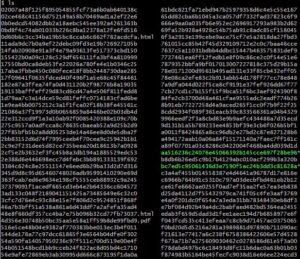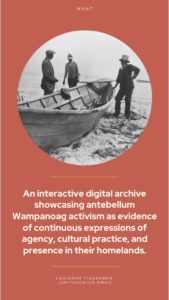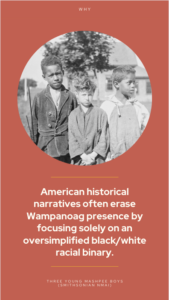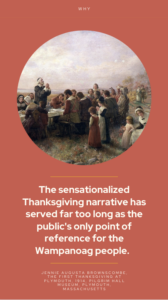Please find the final white paper of DirectHERS through the Google Doc attached.
We express our gratitude to each of our classmates for your insightful suggestions and consistent backing during this journey! It’s truly an honor to belong to such a dynamic and thoughtful group.
More Than Surviving – Final Project Report
The More Than Surviving final project report can be viewed here — we chose to publish it as a Google Doc to make it as easy as possible for our external audience and consultants to read and review. We’ve also embedded it below.
Thank you to all of our classmates for your valuable feedback and support throughout this process! It has been a joy to see your projects develop and to share our own work with you. We’re so grateful to be a part of this ambitious, thoughtful cohort.
Overbaked & Underproofed_FINAL REPORT
For the Ob&Up Final Report, please click the link above.
Blog Post Week 15
The last week was a crunch, and I guess the goal of this class is to be not afraid of things that you have not done before. I would guess that the comfort zone of many students in this class was stretched to its limit. Some people prefer working alone, some are introverted, some are extroverted, some are good with technologies while others are good with writing, etc. The aggregate skill of the class is as varied as the backgrounds of its students, A diverse student group that is responsible for the project that is tangible and unique in a sense. It is a great feeling when the thing that you do think of works but it takes immense amount of tries to get it right, to feel that it is right, and create the working product that you are proud of even it is just for class. Sometimes things need to be trimmed and sometimes things need to be scoped up, and it is the journey that counts, and I would guess that many people would agree with me.
Elizabeth Personal Post – Week 15
The last few weeks have been a crunch, but also an incredible experience. Hopefully it doesn’t make me sound like a slouch to say that I’ve learned more in the last few weeks of the class than I did in most of the time before. A big part of this is the ambition of the project and my teammates — early on when we were conceptualizing the site, Zelda set an example for all of us by saying “yes” to our vision of what the project could be. With a complex, custom built site and only two developers (and that’s being generous to myself — if there are two of us total, Zelda is one and a half), the work I did had to be useful.
I can’t overstate how intimidating this was at first. When I read Gemma’s post the other day, I found so much to relate to — even with the abundance of documentation, including a developer guide Zelda wrote for me, Github still feels like a funhouse maze, or maybe a club that’s technically open to the public, but which requires complex, arcane rituals. Committing my changes, at least, always feels like an incantation that, when I say it, can lead to unexpected results, like creating a hundred extra files that I then have to delete one by one. Which makes me realize the analogy I’m looking for is this:
there was originally an embed of an official clip of “The Sorcerer’s Apprentice” from Fantasia here – I guess even the officially sanctioned Disney videos don’t play nice with WordPress, which checks out. If you’ve never seen it and want to get the reference, you can watch it here. A tl;dr – Mickey is the apprentice of a very stern sorcerer with great powers; while the sorcerer casts very cool spells, Mickey is stuck hauling buckets of water up and down stairs. When the sorcerer clocks out for the day, Mickey decides to use his magic hat to enchant a broom to carry the water for him — with disastrous consequences. The enchanted broom quickly floods the sorcerer’s dungeon, and everything Mickey does to try to stop the chaos makes it worse. As a very anxious kid, this sequence from the movie always haunted me!
Except, of course, Zelda is a much kinder, more encouraging sorcerer than poor Mickey’s boss; instead of fixing my errors for me, they’ve helped me figure out how to fix them myself and cheered me on when I (finally!) get it right. I know from experience that that often takes more time and patience, and I’m grateful for it.
And now that we’re close to the end, we have a whole website, rather than a big mess of broomsticks and buckets, and I can see how my work has helped make that possible. It’s rewarding to see how my contributions have aligned with and supported Zelda’s wizardry, Estefany’s designs, and Majel’s immense passion and knowledge.
One thing that’s been true all semester is how lucky I feel to have gotten to work on this project and to help shine a light on the history of Wampanoag activism while learning about it myself. My feeling of gratitude has only deepened. As a (very) new mother, this semester was always going to be tough for me, but my teammates have shown me so much grace and care, from their patience when I’ve arrived late to our Saturday calls, to their ability to hear what I’m trying to express, even when I’ve been too tired or scattered to find the right words. In ideal circumstances, I wouldn’t have to write code with my baby strapped to me, or bounce him on my lap while trying to discuss database structure or 19th century history — but Estefany, Majel, and Zelda celebrated the fact that I was a new mother and a student, rather than letting me feel guilty or less than for having to balance both at once. For that reason (and so many others!) I’ll always be grateful for the time we spent working together.
RC May 2 journal
For my last personal journal entry, I’d like to give a huge shout-out to Maria Baker, our project manager!
Maria has been driving our project since day 1. She has been working so hard to make the OB&UP vision materialize. While Teddy, Nuraly, and I are working on the individual contributor work on our own schedule, Maria coordinated all our work to make sure we meet our milestones, kept our work organized, scoped our weekly deliverables, wrote all our content + updates, and prepped for the presentation. She also did all of it while also diving into much of the technical work herself (data cleaning & analysis). She has also been connecting with all of us (setting additional Zoom meetings outside of class), and with Bret (around our crazy schedules).
It’s been a really fun project for me, where I also get to learn WordPress. So again, I want to thank Maria for pitching her project, having us on her team, and making this a fun and rewarding project!
GS: Journal Entry (10/12), 29th April
Dear Journal,
I thought it would be a good idea to summarise what happened this week hoping that writing the incident down will help future iterations in explaining this to others. Anyone – if you are familiar with this problem, please reach out as any help is welcome.
Our group created a dedicated DirecterHers email account and related group GitHub repository to publish our website, files, data, and informative material.
I initially placed the folder with my html, css, and javascript files on my desktop, ready for it to be pushed to the new repository. After the creation of a new ad-hoc online repository, I went to my GitBash, or the terminal, and attempted to add the newly created origin, subsequently checking my git status – I had done this before so I expected to encounter virtually no difficulties in the process. Bizarrely, I noticed that the files listed as ‘ready for staging’ were numerous and certainly not in the dedicated dh praxis prject folder; in this sense, it appeared that git was showing me the files which were living on my desktop. To begin with, I did not think too much of it, and chose to add the newly created online origin once more. And then, the fatal error: the decision to attempt to add all files for staging under the wrong assumption that this could be an easy test to better understand the problem (command: git add -A). All the files on my desktops magically disappeared, other than 3 folders which had already been pushed to my personal repository. The worst part had yet to come – when trying to restore those files, the stuff in the dx praxis folder also suddenly disappeared. Below the fatal command and the routes tried to restore the lost files.
407 git remote add origin https://github.com/directhers/dh_praxis.git 408 git status (mmm something is wrong here) 410 git add -A (maybe this will help) 412 git status (shite, all my personal files are gone) 413 git restore (double shite nothing is working) 414 git restore -A 416 git restore 417 git reset –hard (triple shite! Directhers files are also gone) 418 git status 423 cd desktop 424 history 425 cd desktop 426 cd dh_praxis 427 git reflog 428 cd desktop 431 git reflog 433 cd dh_praxis 434 git reflog 435 git reset –hard 436 git status 438 cd desktop 439 git reset –hard 440 git reflog 443 cd desktop 444 git reset 445 git checkout deletedfile 446 cd desktop 447 cd dh_praxis 448 git checkout deletedFile 449 git switch master 450 git switch main 451 git switch master 452 git restore 453 git restore –hard 454 git restore–staged 456 git rm –cached
It gradually became clear that nothing would work, especially after realising that reverting staged items is one of the most difficult things to do (based on the various forums on this topic). Nevertheless, I made further attempts, also with the help of Filipa and Zico.
Finally, we identified the origin of the issue, which was that I had made (evidently by mistake and certainly due to my inexperience) my .git folder on the desktop the origin (not sure whether this makes sense, but it is the only way in which I can explain this), which meant that .git was tracking all the files on my desktop.
I managed to find a folder called lost-and-found in the .git folder and, with the help of Zico, understood that the files contained in it were blobs (binary large objects collecting binary data stored as a single entities). These files presented themselves without an extension and seemed very difficult to decipher (snippet below). I used the below commands to try and isolate some letters in the titles that would help me to match string with relative extension.
grep -e html -r ./ OR grep -e PDF-r ./
At present, I am still in the process of recovering my files. On the bright side, I found 3 of the files that belonged to the original DirectHers folder and I am hoping to find more in the next few hours.
Clearly, the .git folder is destined to oblivion and I no longer wanna see it sitting on my desktop threatening my poor files!
What a week!! I really felt sorry for all those times where I made fun of my mum claiming to have lost her data while typing in Word!Come on mum, not possible !! You know what, it is possible, and it can happen! Note to future self: never (ever) make jokes of older family members claiming to have suddenly lost their files! Ah, last but not least: back up your files!
Week 14: DirectHERS update
As our encoding expedition project comes to a close, we have done extensive research on 15 women directors and produced several pilot files to showcase the flexibility of XML.
Research:
Our team has successfully collected and annotated the careers and works of 15 pioneering women directors from diverse cultural and ethnic backgrounds. By delving into their biographies, filmographies, and the themes they have tackled in and beyond their works, we’ve gained valuable insights into their feminist perspectives and impact on the film industry. We also learn about their struggles and failures, like funding or casting issues. The tag glossary is glowing while we annotate, but now we need to find where and when to stop to give a tentative range for our files and search engine.
Outreach:
Maria has produced tag network diagrams, and we will have an outreach video editing meeting to prepare short clips to showcase our work.
Technology:
The XML-XSLT-HTML mode runs lively, and each research team member will choose at least one director to play this model.
The search engine is under development. We discussed an option for a word cloud of our tags with clickable links, but we will see if we have enough time. Otherwise, a search box will do.
Our workflow will serve as a model for future projects aiming to build similar digital archives. We aim to show the workflow with screenshots and recordings to create a digital story.
The web dev work faced a challenge when GitHub pushed the page. Our tech team is working diligently to address this issue and restore the lost data. But since we kept our transferable XML files and written documents, we are also making a backup plan.
Thank everyone for their hard work and dedication!
WEEK 14_Ob&Up, Ob&Up, Ob&Up-ward?
This week we faced a couple of unforeseeable stumbling blocks. Nuraly has been working on the Bingo game, and just as he had been getting ready to test it, he wasn’t able to actually plug it into the site. For inexplicable reasons, the professional plan for our WordPress site had lapsed. So Ruby had to figure out why the plan had been terminated and then remedy the situation. Then she had to coordinate with Nuraly again, so he could finally test the plug-in. Now, this would not be a tragedy if we had more flexibility in our schedules. But the people in our group do not. So even a small snag like this can potentially cost days. [Can you tell the project manager is writing this post? The project manager periodically has nightmares about snags causing avalanche-sized delays.]
Finally, during class yesterday, we were able to look at the bingo plugin, and while the confetti and the general layout of the game are splendid, we haven’t been able to figure out how to reset the game or how to play it directly on the site (it currently shifts over to a separate window). Nuraly had an emergency and couldn’t make it to class yesterday, so we weren’t able to address the snag in class (with others like Filipa around, we could have asked for help). We’ll solve it with delay.
Overall though, being in person again really helped us get on the same page. Teddy has begun to move deeper into text analysis, and we could talk through what we consider stop words and what conclusions we’re drawing. Maria is preparing to package our findings into a cohesive narrative, and Teddy will continue the analysis for a little longer. Maria will try to expand the narrative to incorporate additional findings until the last possible moment. Teddy and Maria be in contact via Slack over the next few days to query any urgent last-minute questions. Teddy will also make sure that the data is available on GitHub. Meanwhile, Maria will also finish preparing the presentation slides and coordinate with Ruby to accomplish implementing site content.
While sitting together and casually talking about our findings and the pitfalls of our corpora, Ruby had the idea for what we ultimately termed a “judgment barometer.” It will be a visual that shows the spectrum of expressions on an axis from very negative -> negative -> neutral -> positive -> superlative. We’re planning on creating it. It begins with Maria passing a list of judgment expressions to Ruby. Let’s see if we can get it done! On & up-ward!!

^ the triple VERY would be on the superlative end of the barometer.
MTS Update – Week 14
We’re almost there! It’s hard to believe. Seeing pieces of the project come together with visuals, text, and even some interactivity has been powerful. Estefany’s social media posts (more on that in a second!) and Majel’s new site copy have given us a way of seeing what the project will look like from the outside – valuable insight and encouragement as we power through what’s left.
OUTREACH
Outreach comes first this week because it’s exciting – Estefany launched our social accounts today! You can find us at more_than_surviving on Instagram or morethansurviving on Facebook. In preparation for the launch, Estefany and Majel created a beautiful set of story posts to explain the project and its focus. You can see a few of the slides below; I encourage everyone to check out the whole story on Instagram!
Estefany is continuing to create social content, and Elizabeth and Majel are revisiting their research to pull quotes that can be used in future posts.
TECH
We have some key tasks to complete before we can wrap up the tech side of our project, but we’re still on track to finish by our deadline. The focus this week is on front-end development and implementation. Elizabeth has finished building and styling the timeline, so she’ll be able to help Zelda implement the site styles. We’ve also created a tracker for our QA process, so as soon as a version of the site is live, we can start checking the navigation and functionality.
RESEARCH + COPYWRITING
The site copy has been drafted and is in final review with our cultural collaborators. We updated the format of our event data this week, lengthening the short description that will display on the timeline, and embarked on our “nice to have, but not necessary” research task – writing up short descriptions of state and national events to provide context for our Wampanoag events.





